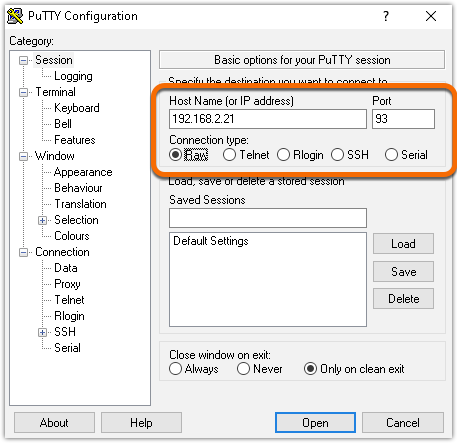SIP Configurations in the Axia IP-Audio Driver
Scope
This document covers SIP configurations in the Axia IP-Audio Driver for versions 2.11.3.3 and higher. Versions prior to this do not include this functionality.
Description
In recent AES67 supported versions of the Axia IP-Audio driver SIP was added in order to support the SIP Unicast method of connection to AES67 streams of audio. These versions enabled the SIP protocol on (the default) port 5060 by default. Some customers would like to disable SIP altogether (for security reasons) or change the SIP listen port.
Changing SIP settings
SIP settings are only changable via a backend connection to the LWRP port (Port 93) using a program like PuTTy or other terminal programs.
- Using a terminal program like PuTTy, connect to the IP address of the computer running the Axia IP-Audio driver on port 93.

- When connected, type the command LOGIN and press enter. No information is returned on the screen when you type LOGIN.
All commands must be sent in UPPER CASE
To disable SIP altogether type the command
SET SIP_ENABLE:0
To change the port that SIP listens on for incoming connections type the command;
SET SIP_PORT:5061
SIP may be re-enabled by sending SET SIP_ENABLE:1
- When complete, enter the command SAVE and press enter.
- To check your configuration enter the command SET with no additional arguments. The following (or similar) is returned. Note the SIP ENABLE and PORT settings at the end.
SET IPCLK_ADDR:"0.0.0.0" ADIP:"239.192.255.3" NIC_IPADDR:"192.168.2.21" NIC_NAME:"{25502939-EF7C-4083-8B63-1286587BDE5B}" PTP_DOM:0 RTP_IP_TOS:184 LWCLK_MODE:2 SIP_ENABLE:0 SIP_PORT:5061- You must reboot for changes to take effect.
Let us know how we can help
If you have further questions on this topic or have ideas about improving this document please contact us

